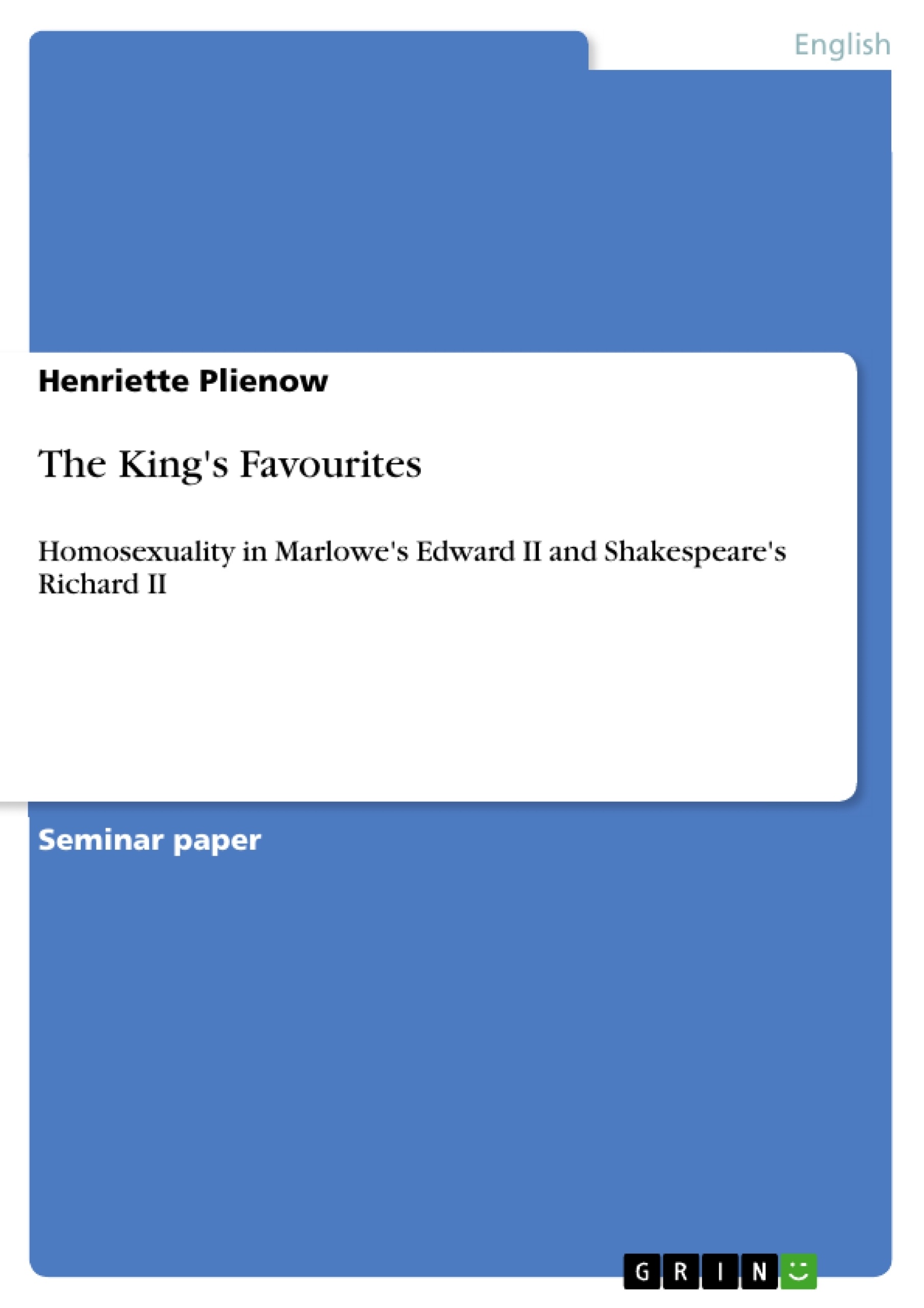This paper’s aim is to analyse and compare the kings Edward II and Richard II as depicted in Marlowe’s and Shakespeare’s plays with special attention to their relationships to their favourites. It cannot, however, take the historical figures of Edward II and Richard II into consideration as this would exceed the paper’s focus.
There are many parallels between the two plays. Each is about a king who is deposed and murdered, and in each the barons accuse the king’s favourites of having manipulated the sovereign to serve their own political advantage. In both plays, the issue of homosexuality comes up: Edward has a homosexual relationship with his favourite Gaveston, Henry Bolingbroke accuses Bushy and Green of having seduced Richard politically as well as sexually and of thus having misled him as a ruler and destroyed the king’s marriage.
The question comes up if both kings’ relationships to their peers really are – as we understand it today – of a homosexual nature. If so: were the favourites accused of having a negative influence on the kings because of their homosexuality? Is homosexuality in itself a charge heavy enough to depose a king? To answer this, chapter two will explain the Elizabethan view on homosexuality, which differs significantly from our own contemporary understanding. Even though the historical settings of both plays are in the Middle Ages, they will be examined from an early modern point of view since they were both written by Elizabethan playwrights for a contemporaneous audience. Subsequent chapters will examine and compare homosexuality within both plays and analyse which role it plays in connection with questions of power and the barons’ revolts.
Table of Contents
- Introduction
- Homosexuality in Early Modern Times
- Edward II
- Richard II
- Conclusion
Objectives and Key Themes
This paper aims to compare and analyze the portrayals of Kings Edward II and Richard II in Marlowe's and Shakespeare's plays, with a particular focus on their relationships with their favorites. The paper will examine the Elizabethan understanding of homosexuality in relation to these relationships and the political implications of these relationships.
- Homosexuality in Early Modern England
- The Relationship Between Kings and their Favorites
- The Role of Homosexuality in Political Power
- The Depiction of Homosexuality in Marlowe's "Edward II" and Shakespeare's "Richard II"
Chapter Summaries
Introduction: This introductory chapter outlines the paper's focus on the portrayal of Kings Edward II and Richard II and their relationships with their favorites. It highlights the parallels between the plays, including the kings' depositions and accusations of their favorites manipulating them.
Homosexuality in Early Modern Times: This chapter explores the Elizabethan understanding of homosexuality, emphasizing the differences between contemporary and early modern interpretations. It discusses the legal and religious perspectives on sodomy, highlighting the lack of a clear definition for homosexuality and its association with social and political disorder. The chapter also analyzes the coexistence of legal punishment for sodomists and the open display of homoerotic desire in various aspects of Elizabethan society.
Keywords
This paper focuses on the themes of homosexuality, power, and political manipulation in Elizabethan England. It examines the portrayal of these themes in Marlowe's "Edward II" and Shakespeare's "Richard II" and explores the Elizabethan understanding of same-sex relationships, emphasizing the contrast between contemporary and early modern views on sexuality and its relationship to social and political order.
- Citation du texte
- Henriette Plienow (Auteur), 2009, The King's Favourites, Munich, GRIN Verlag, https://www.grin.com/document/127560



